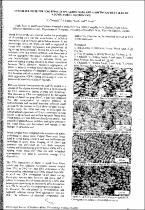 ResearchSpace
ResearchSpace
Acid bi-sulphite pulping effects on hardwoods and a softwood revealed by atomic force microscopy
JavaScript is disabled for your browser. Some features of this site may not work without it.
- ResearchSpace
- →
- Research Publications/Outputs
- →
- Conference Publications
- →
- View Item
| dc.contributor.author |
Chunilall, Viren

|
|
| dc.contributor.author |
Wesley-Smith, J

|
|
| dc.contributor.author |
Bush, T

|
|
| dc.date.accessioned | 2010-01-28T13:47:24Z | |
| dc.date.available | 2010-01-28T13:47:24Z | |
| dc.date.issued | 2009-12 | |
| dc.identifier.citation | Chunilall, V, Wesley-Smith, J and Bush, T. 2009. Acid bi-sulphite pulping effects on hardwoods and a softwood revealed by atomic force microscopy. 47th Meeting of the Microscopy Society of Southern Africa, Durban, South Africa, 8-11 December 2009, pp 41 | en |
| dc.identifier.isbn | 0620350563 | |
| dc.identifier.issn | 0250-0418 | |
| dc.identifier.uri | http://hdl.handle.net/10204/3921 | |
| dc.description | 47th Meeting of the Microscopy Society of Southern Africa, Durban, South Africa, 8-11 December 2009 | en |
| dc.description.abstract | Wood fibres are the raw material used in the production of dissolving pulp for the manufacture of cellulose derivatives such as viscose and cellulose acetate. At the microscopic level, the wood cell wall is organised in layers with different thicknesses and proportions of lignin and hemicelluloses. Within the cell wall layers, cellulose exists as a system of fibrils with diameters of 3-4 nm aggregated into larger structural units. Lignin and hemicellulose bound to cellulose fibrils are removed during pulping, resulting in closer association between fibrils. However, excessive aggregation of fibrils is believed to reduce dissolving pulp reactivity by restricting accessibility of chemicals to cellulose chains. It is therefore critical to control aggregation of cellulose fibril aggregates (CFA) during processing in order to preserve the reactivity of dissolving pulp. Previous atomic force microscopy (AFM) studies on a species of Eucalyptus showed that there is an increase in the CFA dimensions during pulping and bleaching. This increase in CFA was exacerbated by subsequent drying of dissolving pulp fibres. It has been proposed that the incorporation of varying amounts of hemicelluloses and residual degraded cellulose could account for the increase in CFA observed after drying. In this study, the AFM was used to investigate the ultrastructural appearance of CFA in transverse sections of cell walls in wood and unbleached pulp fibres from Pinus patula and four different Eucalyptus species. The content of hemicellulose, cellulose and lignin present in the wood fibres was determined and related to the changes in CFA observed. | en |
| dc.language.iso | en | en |
| dc.publisher | Microscopy Society of Southern Africa | en |
| dc.subject | Acid bi-sulphite pulping | en |
| dc.subject | Hemicellulose | en |
| dc.subject | Acid soluble lignin | en |
| dc.subject | Atomic force microscopy | en |
| dc.subject | Wood fibres | en |
| dc.title | Acid bi-sulphite pulping effects on hardwoods and a softwood revealed by atomic force microscopy | en |
| dc.type | Conference Presentation | en |
| dc.identifier.apacitation | Chunilall, V., Wesley-Smith, J., & Bush, T. (2009). Acid bi-sulphite pulping effects on hardwoods and a softwood revealed by atomic force microscopy. Microscopy Society of Southern Africa. http://hdl.handle.net/10204/3921 | en_ZA |
| dc.identifier.chicagocitation | Chunilall, Viren, J Wesley-Smith, and T Bush. "Acid bi-sulphite pulping effects on hardwoods and a softwood revealed by atomic force microscopy." (2009): http://hdl.handle.net/10204/3921 | en_ZA |
| dc.identifier.vancouvercitation | Chunilall V, Wesley-Smith J, Bush T, Acid bi-sulphite pulping effects on hardwoods and a softwood revealed by atomic force microscopy; Microscopy Society of Southern Africa; 2009. http://hdl.handle.net/10204/3921 . | en_ZA |
| dc.identifier.ris | TY - Conference Presentation AU - Chunilall, Viren AU - Wesley-Smith, J AU - Bush, T AB - Wood fibres are the raw material used in the production of dissolving pulp for the manufacture of cellulose derivatives such as viscose and cellulose acetate. At the microscopic level, the wood cell wall is organised in layers with different thicknesses and proportions of lignin and hemicelluloses. Within the cell wall layers, cellulose exists as a system of fibrils with diameters of 3-4 nm aggregated into larger structural units. Lignin and hemicellulose bound to cellulose fibrils are removed during pulping, resulting in closer association between fibrils. However, excessive aggregation of fibrils is believed to reduce dissolving pulp reactivity by restricting accessibility of chemicals to cellulose chains. It is therefore critical to control aggregation of cellulose fibril aggregates (CFA) during processing in order to preserve the reactivity of dissolving pulp. Previous atomic force microscopy (AFM) studies on a species of Eucalyptus showed that there is an increase in the CFA dimensions during pulping and bleaching. This increase in CFA was exacerbated by subsequent drying of dissolving pulp fibres. It has been proposed that the incorporation of varying amounts of hemicelluloses and residual degraded cellulose could account for the increase in CFA observed after drying. In this study, the AFM was used to investigate the ultrastructural appearance of CFA in transverse sections of cell walls in wood and unbleached pulp fibres from Pinus patula and four different Eucalyptus species. The content of hemicellulose, cellulose and lignin present in the wood fibres was determined and related to the changes in CFA observed. DA - 2009-12 DB - ResearchSpace DP - CSIR KW - Acid bi-sulphite pulping KW - Hemicellulose KW - Acid soluble lignin KW - Atomic force microscopy KW - Wood fibres LK - https://researchspace.csir.co.za PY - 2009 SM - 0620350563 SM - 0250-0418 T1 - Acid bi-sulphite pulping effects on hardwoods and a softwood revealed by atomic force microscopy TI - Acid bi-sulphite pulping effects on hardwoods and a softwood revealed by atomic force microscopy UR - http://hdl.handle.net/10204/3921 ER - | en_ZA |





